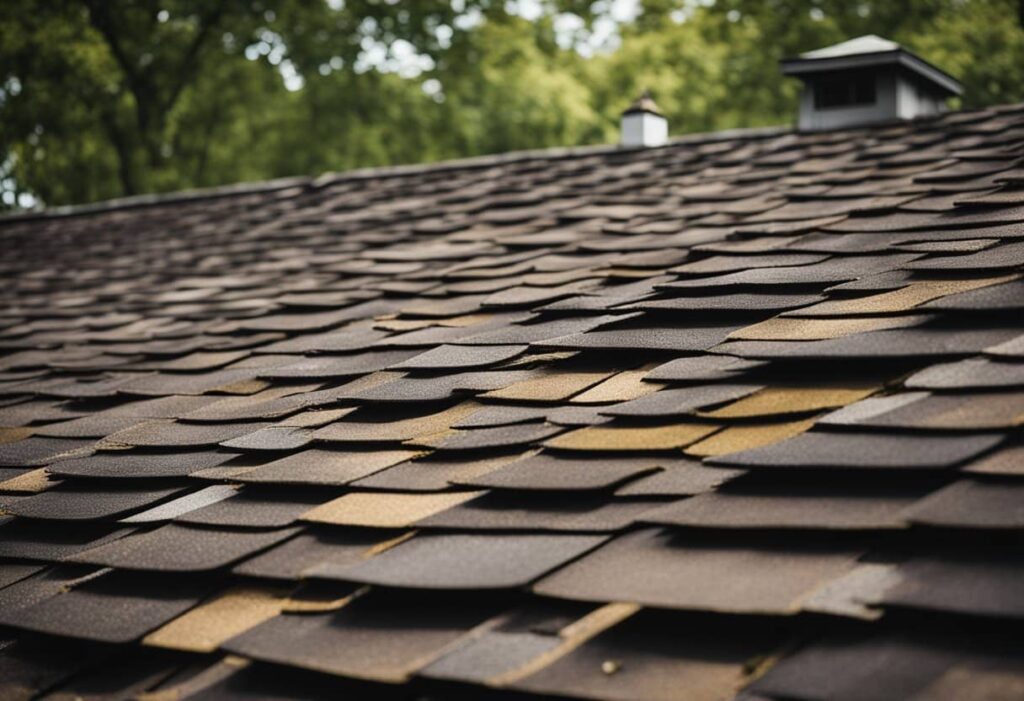The lifespan of a roof is a critical factor for homeowners, impacting long-term maintenance and financial planning. Roofing materials play a significant role in determining how long a roof will last. On average, roof lifespan last anywhere from 20 to 50 years, depending on the type of material used.

Asphalt shingle roofs, common in many homes, typically last about 20 years. Meanwhile, more durable options like metal roofs can last between 20 and 70 years. High-quality clay or slate tiles may endure for up to 100 years, making them a robust choice for those seeking longevity.
Environmental factors and maintenance also influence roof longevity. Regular inspections and timely repairs can extend the lifespan of any roof, ensuring the home remains protected over the years.
Factors Influencing Roof Lifespan

The longevity of a roof depends on various factors, such as the materials used, environmental conditions, and the quality of installation and maintenance.
Material Characteristics
Different roofing materials have distinct life expectancies. Asphalt shingles, the most common roofing material in the United States, generally last 15-30 years. 3-tab roof shingles tend to be on the lower end of this range, while architectural shingles can last longer due to their enhanced durability.
Metal roofs are known for their longevity, ranging from 40 to 70 years. Slate, clay tiles, and concrete tiles are among the longest-lasting materials, with life expectancies of 50 to 100 years or more. Wood shingles, while aesthetically pleasing, need more maintenance and typically last 20-40 years.
Environmental Considerations
The climate and environmental conditions significantly impact roof longevity. Extreme weather, such as heavy snowfall, storms, and high winds, can accelerate wear and tear. Temperatures fluctuations cause materials to expand and contract, affecting their durability.
UV exposure in sunnier climates can degrade roofing materials more quickly. Humidity and moisture levels also play a role, with high humidity potentially leading to mold and rot, particularly in wood shingles. Saltwater exposure in coastal areas can increase corrosion rates in metal roofs.
Installation and Maintenance
The quality of installation is crucial for ensuring maximum lifespan. Poorly installed roofs can develop issues like leaks and structural damage early on. It is essential to hire experienced and certified contractors for the installation process.
Maintenance routines significantly impact roof longevity. Regular inspections can identify and address minor issues before they escalate. Cleaning of gutters, removal of debris, and timely repairs can prevent significant damage. Proper ventilation is also vital to avoid condensation-related problems.
Inadequate maintenance can lead to a roof not reaching its theoretical life expectancy. For instance, a 30-year shingle roof might only last 20-25 years without proper care. Effective preventative measures, like treating for moss and algae, can also contribute to a longer-lasting roof.
Cost Implications of Roofing

The cost of roofing can be divided into two primary concerns: the initial investment and ongoing expenses. Each roofing material comes with a unique price range and expected longevity, influencing both immediate costs and future financial commitments.
Initial Investment
The upfront cost of a roof varies significantly based on the materials used. Asphalt shingles, commonly found in U.S. homes, are often the most budget-friendly option, typically costing between $5,000 and $12,000 for an average-sized house. Metal roofs, on the other hand, come at a premium, ranging from $18,000 to $45,000 depending on the type and quality of the metal.
Installation costs also impact the initial investment. Simple, flat roofs are generally cheaper to install, whereas complex, steeply-pitched roofs require specialized labor, increasing the price. For instance, a sloped roof might increase labor costs by 20% to 50%.
Long-Term Expenses
Long-term expenses for roofing materials can influence the total cost of ownership. Asphalt shingles, while cheaper initially, often need replacing every 20 to 30 years. This frequent replacement adds to total expenditure over time. Metal roofs, with a lifespan of 50 to 80 years, may have higher upfront costs but involve fewer replacements.
Maintenance costs also play a role. Wood shingles, for example, require regular sealing and treatment to prevent decay, adding to ongoing expenses. Conversely, slate and clay tiles, though expensive initially, offer durability with lower maintenance needs, providing cost savings over decades.
Additionally, some high-end options like PVC membranes offer energy efficiency and durability, reducing long-term energy costs. Understanding these factors helps homeowners make informed choices based on both initial and long-term financial implications.
Roof Longevity Optimization

Extending the life of a roof involves proactive maintenance and knowing the right time and methods for replacement. Keeping these factors in check ensures a roof can reach its maximum potential lifespan, which can be up to 70 years or more for some materials.
Proactive Maintenance Strategies
Regular inspections are crucial. A professional should check for loose or damaged shingles, leaks, or wear and tear at least twice a year. Addressing small issues before they become large problems can significantly extend a roof’s life.
Cleaning gutters and removing debris from the roof prevent water damage and mold growth. Trimming overhanging branches reduces the risk of physical damage from falling limbs and excess shade, which can lead to moisture problems.
Ensuring proper attic ventilation is also essential. Poor ventilation leads to heat and moisture buildup, which can deteriorate roofing materials. Using reflective coatings can reduce heat absorption, further preserving the roof.
Replacement Timing and Techniques
Knowing when to replace a roof is key. For asphalt shingles, this is typically around 20-30 years, while metal roofs can often last 50-70 years. Advanced age, persistent leaks, and visible damage are indicators that replacement may be necessary.
Choosing the right replacement materials can optimize longevity. Metal roofs, though more expensive, offer excellent durability. Slate and clay tiles can last over 100 years with proper care.
Professional installation is critical. Poor installation can lead to faults, reducing the roof’s lifespan. Ensuring qualified, experienced contractors handle replacements guarantees better performance and longer life.
Regular reviews of roofing technology and materials ensure homeowners are using the best options available, further enhancing the lifespan of their roofs.
Rabbit Roofing – Your Trusted Roofers in Tampa Bay, Florida
At Rabbit Roofing, we take pride in being the best roofers in Tampa, known for our exceptional roof repair services, including emergency repairs. Our commitment to using high-quality, locally manufactured materials ensures durability and reliability for every project. Whether you’re dealing with minor leaks or extensive damage, our experienced team provides prompt and dependable repairs or roof replacements to protect your home and loved ones. With decades of expertise and a focus on customer satisfaction, Rabbit Roofing stands out as the premier choice for all your roofing needs in Tampa and West Central Florida including Hillsboro.

